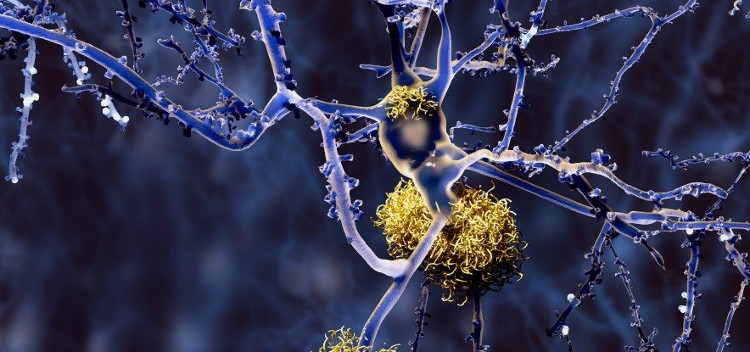Alzheimer's also has many different types
A team of researchers has found evidence that the existence of a specific protein in the human brain can help identify different types of Alzheimer's.
This finding will help researchers and physicians determine exactly the different subtypes of the disease. Since then the treatments and diagnosis of Alzheimer's disease will become more specialized and effective.
Previously, there was no concept that Alzheimer's disease had many small types. Although many evidence shows that the disease has a different way of operating in different patients. But science thinks this is due to the specific body structure of each person.
The study concluded that Alzheimer's disease has three types: typical Alzheimer's, Alzheimer's and cortical Alzheimer's.

Disturbed protein fibers are the cause of Alzheimer's disease.(Image source: sciencealert).
"There have been many doubts beforehand that Alzheimer's has different types of diseases. However, until now we have found specific evidence to prove the correctness of this theory," according to the words. Dale Bredesen, professor of neurology at the University of California, Los Angeles (USA) said. "This study will be an important prerequisite for developing methods to optimize the treatment process for each type of Alzheimer's disease."
Alzheimer's diseases will produce different amyloid-beta peptide chains . These sequences will then assemble themselves into specific protein strands in the brains of Alzheimer's patients.
When analyzing the structure of these proteins, we will identify and diagnose different types of Alzheimer's.
To reach the final conclusion, the research team led by Robert Tycko analyzed the protein strands within 37 tissue samples taken from 18 Alzheimer's patients.
The team discovered that there are three different types of protein fibers that are completely different . Especially in acute Alzheimer's disease, the disease changes very quickly and protein fibers are very small, making it difficult to diagnose the disease.
In the US alone, there are about 5.4 million people with Alzheimer's disease. Economic losses and medical expenses care for sick people of up to 236 billion dollars per year.
As the disease progresses, symptoms include confusion, discomfort, mood changes, loss of language analysis, long-term memory loss, and sensory decline. Gradually, the body will lose some functions, eventually leading to death.

Science has not yet understood the causes and progress of Alzheimer's disease.
Alzheimer's disease can develop lately for a long time before symptoms can be detected. Usually when these symptoms are revealed, the patient can only live for about 7 years, less than 3% of patients live longer than 14 years after detection of the disease.
Science has not yet understood the causes and progress of Alzheimer's disease. Research shows that the disease is associated with arrays and tangles in the brain. Current treatments reduce only a small part of the symptoms, no treatment can prevent or slow the progression of the disease.
Some living habits have been recommended to prevent Alzheimer's disease, but there is not enough evidence to suggest that these recommendations can reduce brain degeneration. Neuroscience, exercise, and a balanced diet have been proposed to prevent as well as a way to support treatment.
- Why do people have different blood types?
- The lust of Feng Lan
- Inventing diagnostic test for 12 types of cancer
- New generation sweeteners replace diameter
- Nine types of helicopters entered history
- 1001 types of self-defense of marine animals
- Magical beautiful snowflakes
- Iran launched three new types of missiles
- The most exotic types of heterogeneous lightning of nature
- Measure blood sugar with light
- More than 20,000 types of bacteria in a liter of seawater!
- If you think tears are only one type, you are wrong, there are 3 types of muscles
 Green tea cleans teeth better than mouthwash?
Green tea cleans teeth better than mouthwash? Death kiss: This is why you should not let anyone kiss your baby's lips
Death kiss: This is why you should not let anyone kiss your baby's lips What is salmonellosis?
What is salmonellosis? Caution should be exercised when using aloe vera through eating and drinking
Caution should be exercised when using aloe vera through eating and drinking